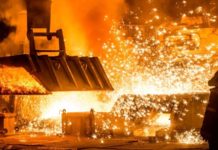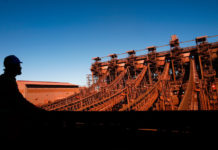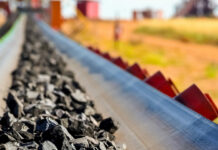
[miningmx.com] — Rio Tinto said on Friday it had moved to quarterly pricing of iron ore contracts, becoming the latest major miner to dump annual price-fixing, despite opposition from buyers around the globe.
“Rio Tinto’s position reflects the recent structural shift in the iron ore market away from benchmark pricing,” Rio Tinto’s iron ore chief Sam Walsh said in a statement.
The new pricing regime started on April 1, with reports BHP Billiton was already getting more than $130 a tonne for its ore under April-June contracts based on the January-March average spot price — more than twice last year’s fixed price.
“Benchmark pricing only works if it reflects market fundamentals, otherwise the system would need to change,” Walsh said.
The threat of a shift had pitted miners, seeking to cash in on higher spot market prices, against steel mill customers from Beijing to Brussels demanding guaranteed prices for 12 months.
Brazil’s Vale and BHP last month made it clear they were moving away from annual price benchmarking as spot prices soared above last year’s annual fixed price.
“What Rio has simply done today is sign the death warrant for annual benchmarks,” said James Wilson, a mining analyst for DJ Carmichael & Co.
As recently as Thursday night, China was expressing support for the old benchmark system.
Xu Xu, chairman of the China Chamber of Commerce of Metals, Minerals and Chemicals Importers and Exporters (CCCMC) said that only the benchmark system could guarantee stability and security for both buyers and sellers.
China is the world’s largest buyer of imported iron ore from Brazil and Australia.
Sources familiar with the price negotiations so far doubted the quarterly pricing deals struck by Rio and the others included Chinese steel mills.
“The Chinese mills under the umbrella negotiating bodies remain very opposed to this switch,” one source said.
The CCCMC participates in pricing negotiations with foreign miners alongside the China Iron and Steel Association.
Miners have pushed for several years to move away from an annual benchmark price system. The explosion of China’s steel sector, growth of the spot market and a spate of Chinese defaults on contracted ore two years ago only increased their resolve.
Negotiations with mills already signed up to pay quarterly — most likely in Japan, South Korea and Taiwan — over how much iron ore each will be allotted under the new pricing system were not yet concluded.
While pricing will shift to a quarterly basis, actual tonnages will continue to be contracted on an annual basis under contracts specifications outlined recently by BHP Billiton iron ore president Ian Ashby.
Rio Tinto declined to provide further guidance on its dealings with customers, citing ongoing discussions.
BHP Billiton has already secured a 99.7 percent hike in the quarter, according to Macquarie Bank.
Citing steel industry sources in Japan, the bank’s London-based commodities team this week said a $120.08 a tonne settlement for Pilbara fines iron ore was 99.7 percent over 2009 Japanese contracts.
The settlement would result in Australian iron ore landing at around $131.50 a tonne on a delivered basis — a 22 per cent discount to current spot levels, Macquarie said.
The price over the following three months will be determined by the indexed, or averaged, spot price between April and June. Just over a week into the period, that average stands at $159.35.
Rio is forecasting China’s iron ore demand to double to 900 million tonnes per year by 2020. It expects to lift iron ore production capacity 6 percent to 230 million tonnes next year, followed by a bigger jump to 300 million tonnes in five years.










